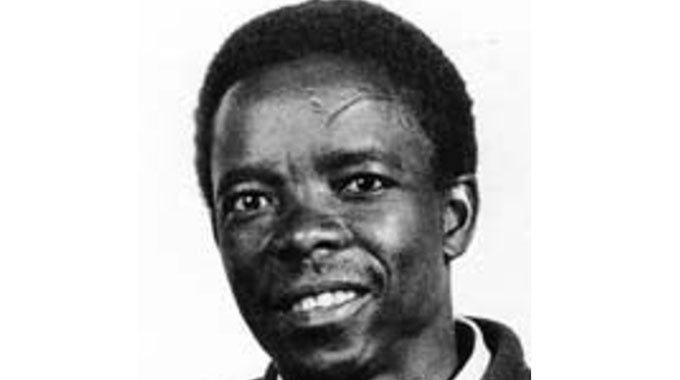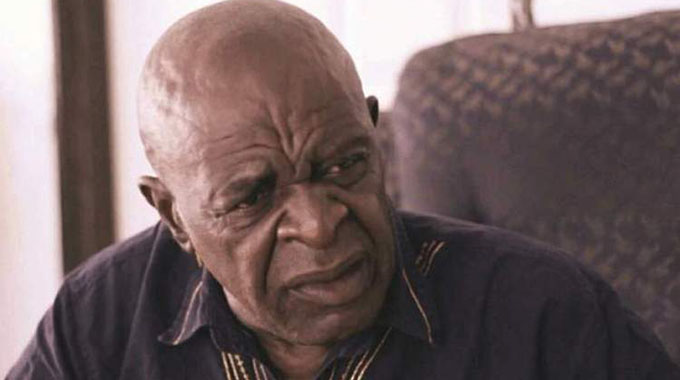Ndandarika and his message through art

The month of May is a significant one for the visual arts fraternity as it commemorates and appreciate the life of Joseph Ndandarika, one of the most gifted and successful sculptors Zimbabwe has produced. He is believed to be ranked amongst the world’s major sculptors. Born and breed in Zimbabwe Joseph was known for his figurative work.
He grew up in Rusape and attended Serima High School. It was John Groeber the founder of Serima Mission and Cornelius Manguma who identified the young boy’s talent in art. The two started nurturing Ndandarika by training him in how to draw and crave. It is said while Joseph Ndandarika was at Serima High; he was chosen to paint several murals inside St Mary’s church.
The height of Ndandarika’s painting career came when the Museum of Modern Art acquired his 1962 oil, “Bushmen Running from the Rain.” Ndandarika’s signature was his mixing of the paints on the canvas after several years of painting, Ndandarika was sent by McEwen to train in stone sculpture with Joram Mariga. In 1962, Ndandarika joined Frank McEwen’s Workshop School in Harare and became one of its and most significant members.
His art career experienced a transition as he began with painting then later on moved to sculpting through carving and modelling. Even McEwen spoke of Ndandarika as a great and universal genius who worked with every possible medium.
This lack of inhibition matured into an assured belief in himself as a consummate artist, and the strength and scope of his work grew accordingly.
During the mid-1960s he gradually shifted more and more towards sculpting, and would end up in all of McEwen’s major exhibitions that made Zimbabwean stone sculpture famous. Ndandarika’s biggest impact may have been convincing McEwen that in Shona mythology, spirits inhabited rock formations.
This formulation had a major impact in McEwen’s marketing of his sculpture, leading him to claim that his sculptors were unleashing the spirit in the stone in the course of their work. Ndandarika was able to keep selling through the hard times of the 1970s following McEwen’s departure from Rhodesia.
During the 1980s Zimbabwean arts revival, he was one of the country’s most prominent “first generation” sculptors’ canvas rather than the palette, a technique that created a highly uneven surface.
Some of his awards and achievements include in 1981 he came second the during Annual Nedlaw Exhibition, at National Gallery of Zimbabwe, in 1985 Joseph was highly commended at the Annual Nedlaw Exhibition, in 1983 his work depicted in a stamp issue of Common wealth day, March 14, Commemorative Stamps, PTC, Zimbabwe and in 1986 he received an Award of Merit, during Zimbabwe Heritage Exhibition held at the National Gallery of Zimbabwe.
He participated in many group exhibitions locally and in Britain, France, Australia, the US, South Africa and Zambia.
He has had many works purchased by museums and private collections around the world.
Some of his early classic pieces are in the National Gallery of Zimbabwe’s permanent collection.
In his formative years, he ran a studio in Hatfield where he employed and mentored many young aspiring artists. His works always radiated with a finished sheen, elegance and perfection.
He was very particular in the finish and presentation of his work a trait that distinguished him among his peers and placed him in high esteem with collectors, gallerists and art connoisseurs.
His art embraced our concepts of religion, morality, family and community. Through his work, Joseph Ndandarika does not remind people that traditional beliefs of the Shona have never altered, nor have they been re-thought, modified, or removed from their original, traditional matrix to suit the needs of the urbanised Shona people. Our traditions are still relevant today.
Throughout his vast creativity and output, Ndandarika was always searching for new themes and new postures to articulate African culture and traditions. Following Zimbabwe’s independence in 1980, his output became prolific. He became one of the most financially and artistically successful artists for a decade until his death in 1991.
Ndandarika’s mastery is exhumed through his sculptures which are capable of expressing searing grief and loss; the fragility of our earth -bound existence; the humour and love that is possible in human relations; and the constant presence of spiritual powers and links with previous generations.
Most of his artworks Ndandarika portrayed dilemmas of life not only with a consummate skill, but with an understanding and expression that surpasses humanity.
He worked endlessly with a figure as a means of portraying elements of both worlds. Some of his works include Hair Dressing, Muroora, I Lost My Money, Magic Women, Signed, and Telling Secrets among others.
His background and upbringing was simple, but significant. Joseph Ndandarika died tragically in May 1991 at the age of 50. Although Joseph became a city dweller, his highly critically acclaimed work spoke of human potential. He struggled with the effects of urbanisation on Shona cultural beliefs.
This lead to the creation of some great works of the Zimbabwean sculpture movement as he captured in stone the beliefs that had structured the lives of previous generations.
The legend is alive through his works which are exhibited in galleries such as the National Gallery of Zimbabwe, British Museum, Museum of Modern Art, Chapungu Sculpture Park St Mungo’s Museum of Religious Life and Art among others.










Comments